Paul Warfield Tibbets, Jr., a Brigadier General in the United States Air Force, was an extraordinary pilot known for his exceptional skills. He was celebrated as one of the leading bomber pilots of his era.
Tibbets’ career was filled with remarkable achievements. Among these, his role as the pilot of the Enola Gay, a B-29 bomber, stands out. This aircraft was responsible for dropping the first atomic bomb on Hiroshima, Japan. This significant event in military history ensured Tibbets’ important position in the records of aviation and warfare.
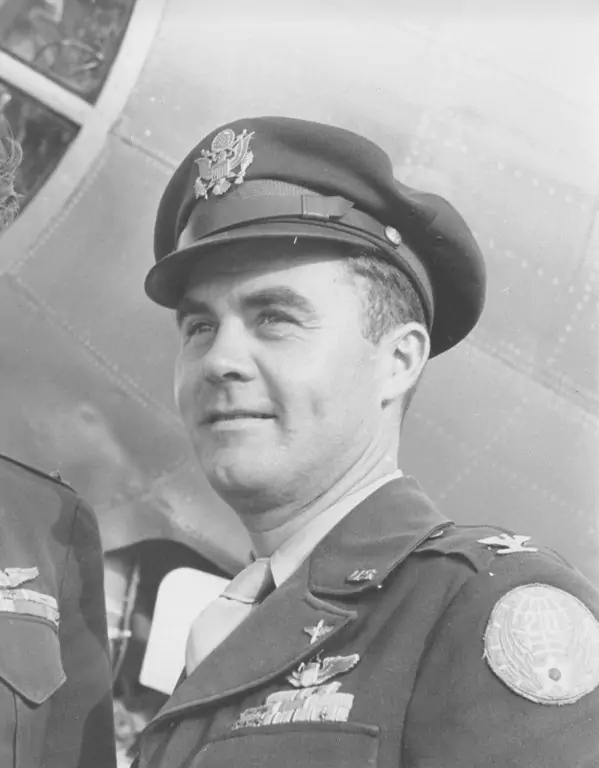
If you’re fascinated by the history and power of the B-29 Superfortress, you won’t want to miss the story of the most famous one of them all: The Enola Gay and our article about the must known facts about the B-29 Superfortress.
Keep reading to explore his compelling story!
Key takeaways
- Tibbets was an exceptional bomber pilot and played a critical role in various military operations during World War II.
- He was chosen to head the 509th Composite Group, responsible for delivering the world’s first atomic bomb.
- Tibbets piloted the Enola Gay, which dropped the first atomic bomb on Hiroshima, Japan.
- Following the war, Tibbets continued to serve in the U.S. Air Force and held senior positions, retiring as a brigadier general.
- As a civilian, he directed an all-jet executive taxi service and authored a book about his experiences with the atomic strikes.
- Tibbets remained steadfast in his belief that using atomic weapons on Japan was morally correct and never wavered in this conviction.
- He was inducted into the National Aviation Hall of Fame in 1996, and his plane, the Enola Gay, is displayed at the National Air and Space Museum.
Early life
Paul Warfield Tibbets Jr. was born on February 23, 1915, in Quincy, Illinois, to Enola Gay and Paul Tibbets.
Growing up in Florida, he experienced his first airplane ride at the age of 12, when he was asked to toss candy from an aircraft to crowds at a racetrack and beach. This event ignited his passion for flying, and he became determined to become a pilot.
Coming from a family of doctors, he initially pursued medicine at the University of Florida and the University of Cincinnati. But, during his time at university, young Tibbets decided to pursue a career as a military aviator.
He enlisted as a cadet on February 25, 1937, at Fort Thomas, Kentucky. Excelling in the air cadet program, he graduated first in his class the following year at Kelly Field, Texas, and received a commission as a second lieutenant.
World War II
The War in Europe
When the United States entered World War II in December 1941, Tibbets was already an experienced bomber pilot.
After graduating from flying training in February 1938, he was assigned to the 16th Observation Squadron at Fort Benning, Georgia. In the early months of the war, Tibbets flew anti-submarine patrols out of Pope Field, North Carolina, before qualifying to fly Boeing B-17 Flying Fortress bombers.
In February 1942, Tibbets became the commander of the 340th Bomb Squadron, which was part of the 97th Bombardment Group and was dispatched to England as a component of the newly organized Eighth Air Force.
On August 17, 1942, Tibbets and his team piloted a B-17 to strike the French city of Rouen. This operation marked the first raid by an American squadron on German-controlled Europe.
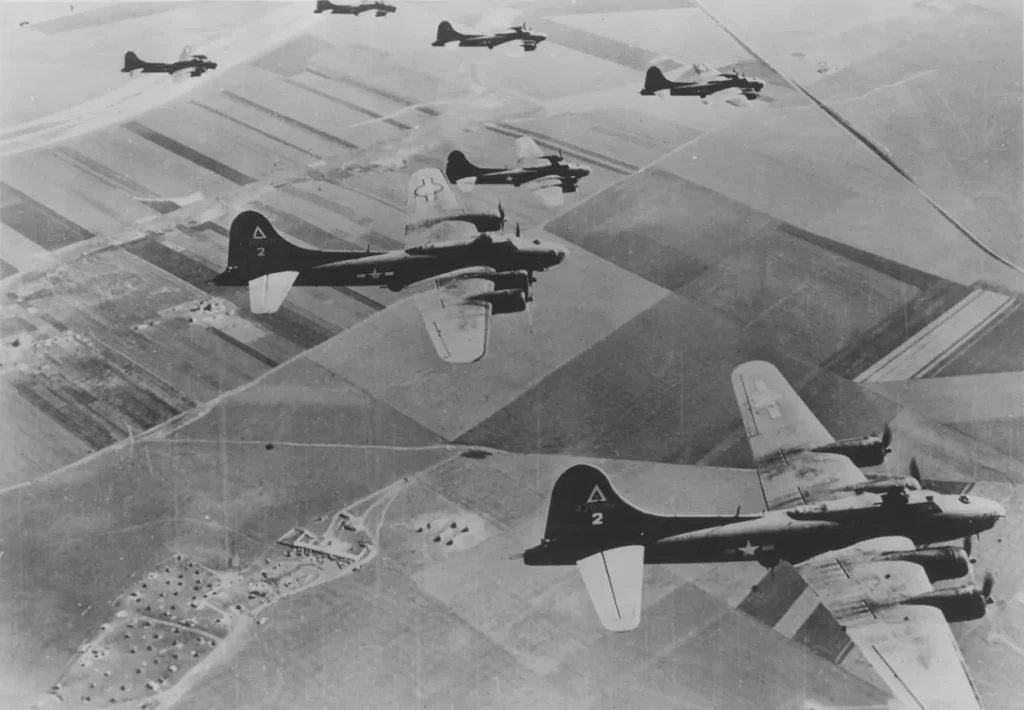
They launched 1,100-pound bombs targeting a locomotive workshop situated in the Sotteville marshaling yards at Rouen, which was the most extensive railroad-switching facility in northern France. Twelve B-17s participated in the mission, flying in formation under Tibbets’ guidance.
Tibbets and the other 11 B-17s assaulted the main objective, while an additional six B-17s targeted a secondary location. The latter group was led by an aircraft named Yankee Doodle, carrying the Eighth Air Force commander, Brigadier General Ira Eaker.
Tibbets was also involved in the raid on Lille on October 9, 1942. This marked the first instance of 115 aircraft participating in a critical bombing mission. Tibbets was at the helm of the leading plane.
He continued to lead daring B-17 missions almost daily throughout the summer and fall of 1942. His exceptional piloting skills quickly caught the attention of top military leaders, including Generals James Doolittle and Dwight D. Eisenhower.
Following the completion of 25 missions in B-17s, Tibbets was chosen to serve as the personal pilot for General Eisenhower and General Mark Clark. He flew them for several months during their negotiations at Gibraltar in preparation for the British-American invasion of North.
The War in Africa
In November 1942, the 97th Bombardment Group, under General Doolittle, was transferred to North Africa.
During this period, Lieutenant Colonel Tibbets led raids against German bases in the region, with his B-17s causing significant disruption to enemy supply lines in Tunisia. Tibbets also played a pivotal role in Algeria, leading the first bombardment mission in support of Operation Torch, the North Africa invasion.
On Christmas Day 1942, he spearheaded an 18-aircraft attack on the Tunisian port city of Biserte, devastating the German resupply facilities. The success of the B-17 raids caught the attention of President Franklin D. Roosevelt, who was so impressed that he ordered the promotion of Tibbets’ superior to brigadier general.
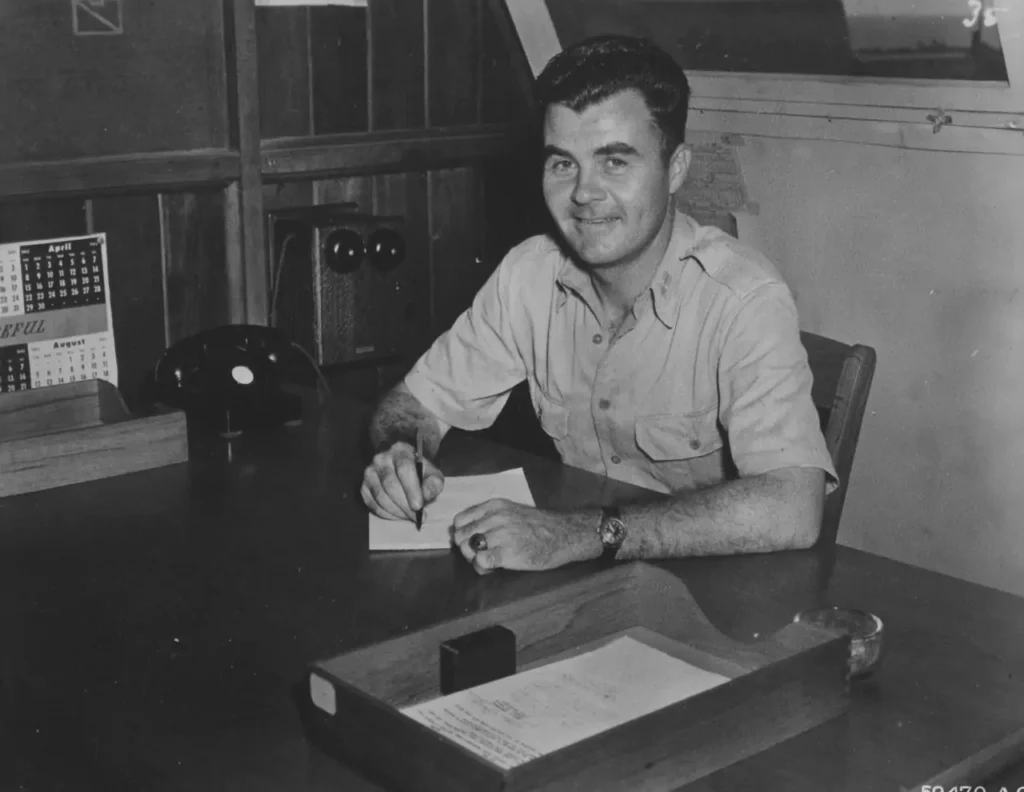
General Doolittle was equally impressed with Tibbets and chose him to lead his bombardment division. Consequently, in January 1943, after successfully completing 43 combat missions, Tibbets was assigned as the assistant for bomber operations, working alongside Colonel Lauris Norstad, the assistant chief of operations for the Twelfth Air Force.
Testing the B-29
Following his combat missions in North Africa, Tibbets returned to the United States in 1943 to transition to the B-29 Superfortress bomber.
At the time, the B-29, which had been in development since 1940, was experiencing numerous design issues. After a significant setback in February 1943, when the XB-29 caught fire and crashed, claiming the lives of the program’s chief test pilot, Eddie Allen, and 10 top technicians, the future of the aircraft was uncertain.
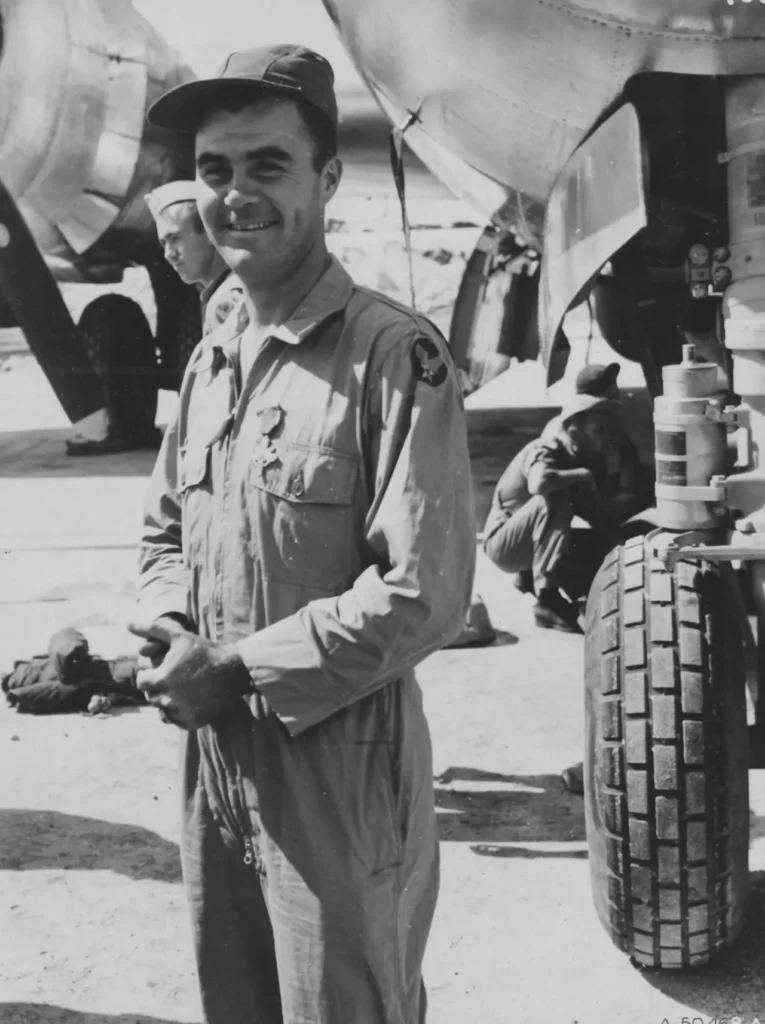
In response to this crisis, General Hap Arnold, Chief of the Army Air Force, sought an experienced bomber pilot to test the B-29. General Doolittle recommended Tibbets without hesitation.
As a lieutenant colonel, Tibbets took on the role of a military test pilot for the YB-29, helping to train the first combat crews and establishing a school for B-29 flight instructors. Over the course of more than a year, he successfully addressed most of the aircraft’s issues, eventually amassing over 400 hours in flight tests—more than any other pilot.
Tibbets’ excellent performance as a test pilot for the B-29 Superfortress program at Wichita, Kansas, solidified his reputation as an exceptional officer despite the inherent dangers involved in testing new technology.
The Manhattan Project
In September 1944, Lieutenant Colonel Tibbets, with his exceptional military record and endorsement from Army Air Force Chief Hap Arnold, was chosen to command the 509th Composite Group, the world’s first nuclear strike force.
Tibbets was considered the best-qualified pilot for the job, having demonstrated superb leadership abilities during bombing raids in Europe and North Africa, as well as his work on the B-29.
Tasked with organizing and training a handpicked unit to deliver the atomic bomb developed under the Manhattan Project, Tibbets was given the code name “Silverplate” and the authority to command any resources necessary. He assembled his crews from individuals he had flown with over Europe and acquired 15 new B-29s, which were then specially modified for the mission.
The aircraft were stripped of turrets and armor plating, equipped with fuel injection systems for greater range and efficiency, and fitted with the latest reversible pitch propellers.
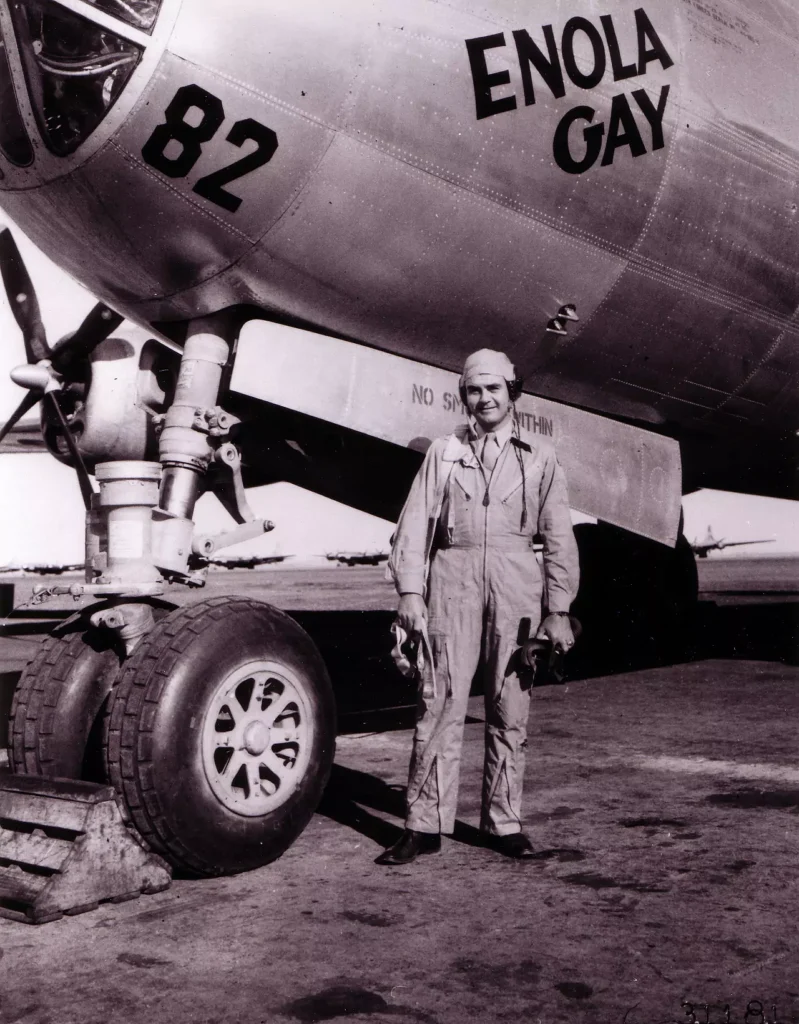
The 509th Composite Group was formally activated on December 17, 1944, and Tibbets was promoted to full colonel the following month.
Secrecy was paramount, so Tibbets established the 509th Composite Group at the remote Wendover Army Air Base in Utah. There, they spent several months test-dropping 10,000-pound concrete bombs, or “pumpkins,” in preparation for the actual raid.
By May 1945, Tibbets considered his team proficient enough for deployment overseas, and they shipped from Seattle to Tinian in the Marianas.
On August 6, 1945, Tibbets piloted the B-29 bomber Enola Gay, named after his mother, and successfully executed the world’s first atomic bombing over Hiroshima, Japan. The flight of the Enola Gay went off flawlessly, showcasing Tibbets’ exceptional skills as a pilot and leader.
After the War
Operation Crossroads
Following World War II, Paul W. Tibbets continued as commander of the 509th Composite Group, participating in the Bikini atomic bomb tests in 1946.
Tibbets requested to be the pilot of the atmospheric nuclear test, with his friend Tom Ferebee as the bombardier.
However, the Air Force decided to hold a “Bomb-Drop Competition” to determine the crew. In Albuquerque, New Mexico, Tibbets, and Ferebee’s team had the best performance, but due to an irrelevant factor called “ballistic winds,” they were placed last.
Instead, the winners chosen were Major Woodrow P. Swancutt, Major Harold H. Wood, Captain William C. Harrison, and Major William B. Adams.
Tibbets served as the technical advisor to the Air Force commander during the Bikini Bomb Project.
Sidenote: During the Atomic test, Swancutt’s crew missed the target by 2,130 feet.
Testing the B-47
After departing from Roswell, New Mexico, Paul Warfield Tibbets Jr. attended the Air Command and Staff School at Maxwell Air Force Base, Alabama. In 1947, he was assigned to the Directorate of Requirements at Air Force Headquarters in the Pentagon, eventually becoming the director of the Strategic Air Division, where he played a crucial role in shaping the future of bombers.
Tibbets believed that jet aircraft would be the future of bombers and became involved in the Boeing B-47 Stratojet program, a long-range, six-engine, turbojet-powered strategic bomber designed for high subsonic speeds and altitudes.
As one of the most experienced and famous bomber pilots, Tibbets was the logical choice to flight test the B-47 Stratojet, the world’s first jet bomber, from 1947 to 1952.
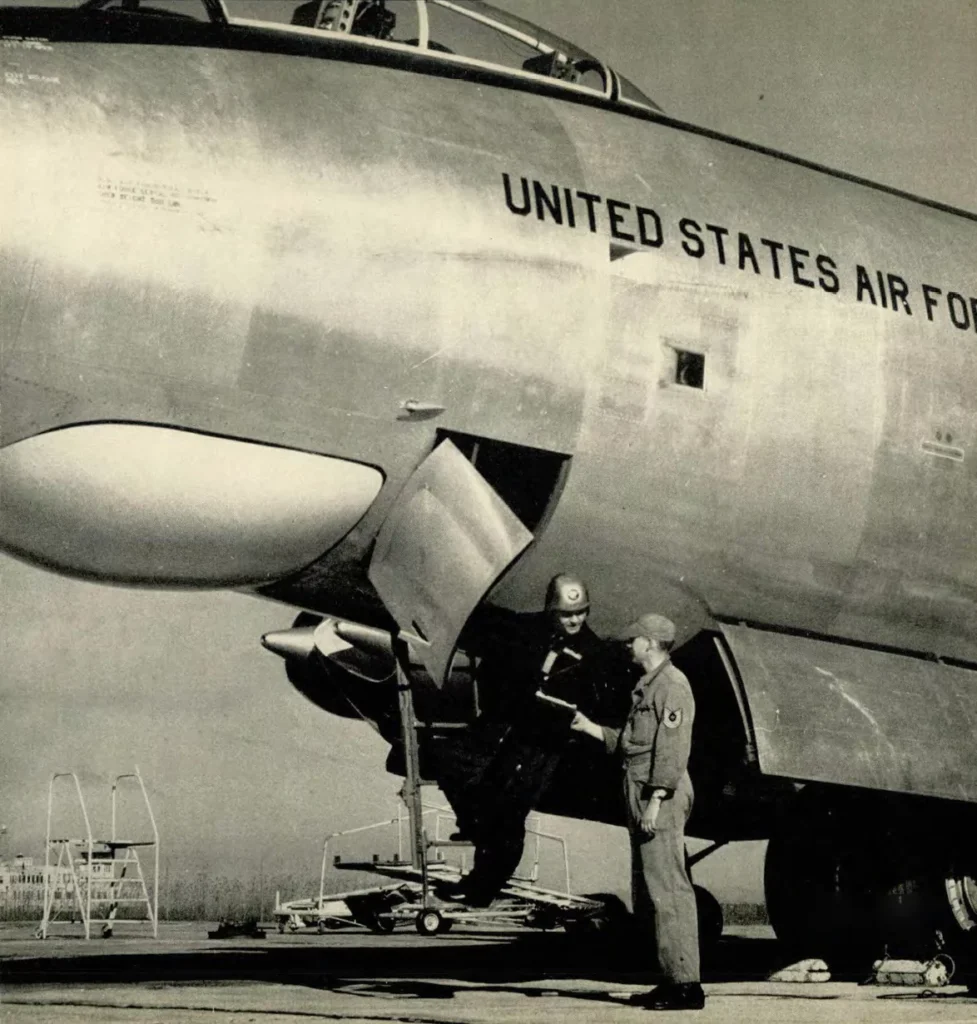
He advocated for the B-47 over the B-36, arguing that the B-36 would be vulnerable to modern jet fighters. Tibbets also emphasized that, despite the B-47’s fuel consumption and limited range, the problem could be solved by air refueling with B-29s being converted to tankers and the development of the KC-135. Largely as a result of his testimony, the Air Force decided to purchase over 2,200 B-47 bombers and phase out the B-36 fleet.
Between July 1950 and February 1952, Tibbets served as the B-47 project officer at Boeing in Wichita and later as the commander of the Proof Test Division at Eglin Air Force Base in Valparaiso, Florida, where flight testing of the B-47 took place.
Later career
In 1954, he returned to the Air War College in Montgomery, Alabama, before being appointed as the director of war plans at the Allied Air Forces in Central Europe in Fontainebleau, France, in June 1955.
Tibbets subsequently returned to the US in February 1956 to command the 308th Bomb Wing at Savannah, Georgia.
In January 1958, Tibbets became the commander of the 6th Air Division at MacDill Air Force Base, Florida, and was promoted to brigadier general in 1959.
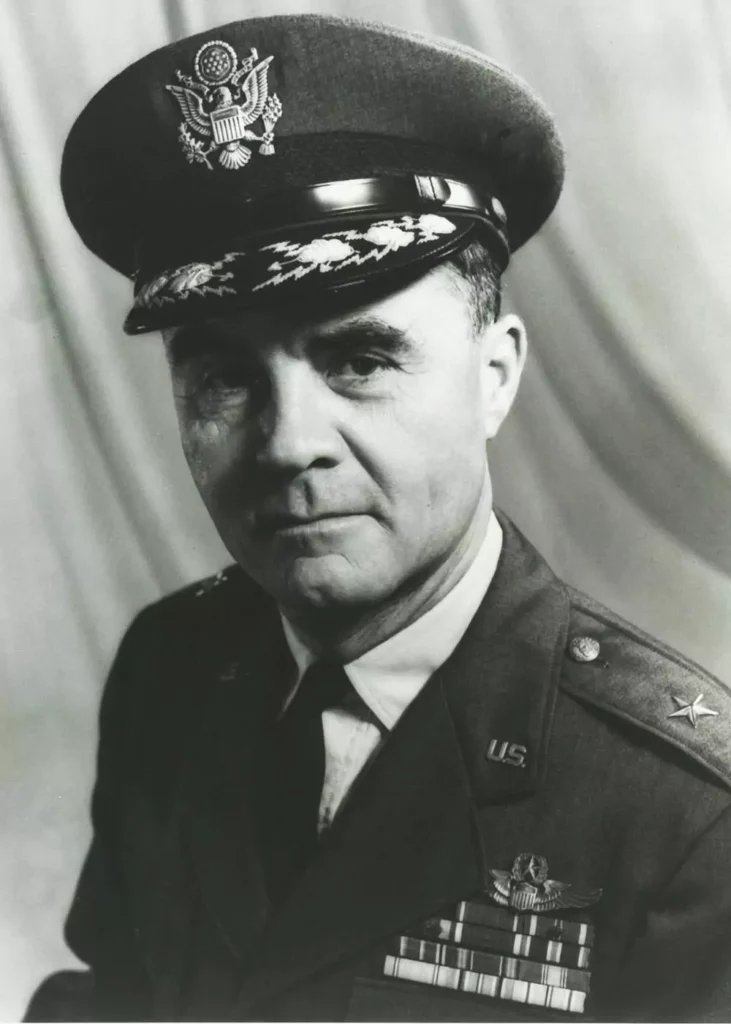
He later served another tour at the Pentagon as the director of management analysis before being assigned to the Joint Chiefs of Staff as the deputy director for operations and subsequently as the deputy director for the National Military Command System.
After leaving Washington, he was appointed military attaché in India and eventually retired from the United States Air Force on August 31, 1966.
Tibbets transitioned to jet-propelled aircraft and held various senior positions within the Strategic Air Command, including 308th Bomb Wing commander, 6th Air Division commander, and deputy director of Operations on the Joint Staff. He helped establish the National Military Command Center at the Pentagon and retired from the U.S. Air Force in 1966 with the rank of brigadier general.
Retirement
After his military career, Tibbets directed an all-jet executive taxi service, Executive Jet Aviation, Inc., in Columbus, Ohio. He served on the founding board and as its president from 1976 until his retirement in 1985.
After his retirement, Tibbets wrote his account of the atomic strikes called “The Tibbets Story”.
Throughout his life, Tibbets remained steadfast in his belief that using atomic weapons on Japan was morally correct, stating, “I did what I was told to do. I have no regrets. I have never lost a night’s sleep over it.”
In recognition of his service, Tibbets was inducted into the National Aviation Hall of Fame in Dayton, Ohio, in 1996. His plane, the Enola Gay, is on permanent display at the National Air and Space Museum in Washington, D.C.
Tibbets passed away on November 1, 2007, at the age of 92. Per his request, his ashes were scattered over the English Channel, where he had flown extensively during World War II, by his grandson, Lieutenant Colonel Paul Tibbets IV, a B-2 Command pilot.
Further reading
- Boeing B-29 Superfortress Facts: 11 things to know
- The Enola Gay: The B-29 that changed warfare
- Surviving B-29 Superfortresses: A Visitor’s Guide
Bibliography
- The Enola Gay: The B-29 That Dropped the Atomic Bomb on Hiroshima by Norman Polmar
- Flying Safety magazine November 1991
- Dropping of the Atomic Bombs By Mary Meinking
- American Military Leaders: From Colonial Times to the Present by John C. Fredriksen
- Introduction to the United States Air Force by B. Chance Saltzman & Thomas R. Searle